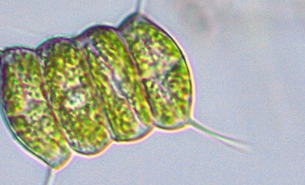Clouds have a large effect on the climate. They form around tiny aerosol particles present in the atmosphere. Salt aerosol particles can originate from both sea and inland sources such as desert and playa areas. A unique set-up for studying salt aerosol particles at MAX IV will give insights that can inform climate models.
Cloud properties depend on atmospheric particles
Clouds affect temperature and the amount of sun radiation that reaches Earth. They consist of tiny droplets formed by condensation of water vapour onto aerosol particles floating in the atmosphere. The properties of the aerosol particles affect how easily clouds form or dissolve and how reflective they are. Some clouds can cool the Earth, but others could instead hold onto heat and contribute to a warmer climate. The aerosol particles originate from sources like dust, combustion, or sea spray. Salt aerosols are of particular interest because they attract water being so-called hygroscopic aerosols.
“Hygroscopic aerosols can absorb moisture from the air, which influences their behaviour in the atmosphere and as nuclei for cloud droplets. They can grow in size and scatter light,” says Xiangrui Kong from the University of Gothenburg.
Sampling aerosols from significant saltwater sources
In the study conducted at FinEstBeAMS, the researchers brought samples from two significant sources of salt aerosols on Earth—the Qaidam Basin, located at the Qinghai Tibet Plateau, and the Arctic Ocean. The researchers are interested in the chemical composition of the particles, especially if the composition changes with size.
“Understanding the variation in chemical composition with particle size is crucial because different-sized particles can have different sources, lifetimes, health effects and other physiochemical properties,” says Kong. “There is also a size-dependent factor which could make smaller particles evaporate or sublimate more easily compared to larger particles.”
The amount of different organic compounds in the Arctic Ocean could change as the ice melts due to climate change and lead to changes in cloud-forming properties.
“The evaporation or sublimation is also directly determined by chemical composition. So, the size and chemical composition are actually coupled. At present, we also do not know if the chemical compositions of aerosols from seawater or salt lake brine vary with size,” explains Kong.
New setup facilitates measurements under realistic conditions
The researchers used a setup from Lund University to simulate salt aerosols by atomizing the saltwater samples into fine particles at the beamline. The particles pass through the X-ray beam, and their chemical compositions and depth profiles are analysed. Earlier studies by the research group have focused on model systems where the sample instead was put into the X-ray beam as a thin film on a surface. The present study offers a more realistic way of studying the aerosols and the size dependence of composition. It will also be a way to understand how well the model system and the more realistic system compare.
“This is the first time we have studied real aerosols using the MAX IV aerosol delivery system. It opens the possibility of seeing interesting and important surface properties and mechanisms on actual aerosol particles,” concludes Kong.
Photo: Xiangrui Kong, Nicolas Fauré and Jan Petterson from the University of Gothenburg




